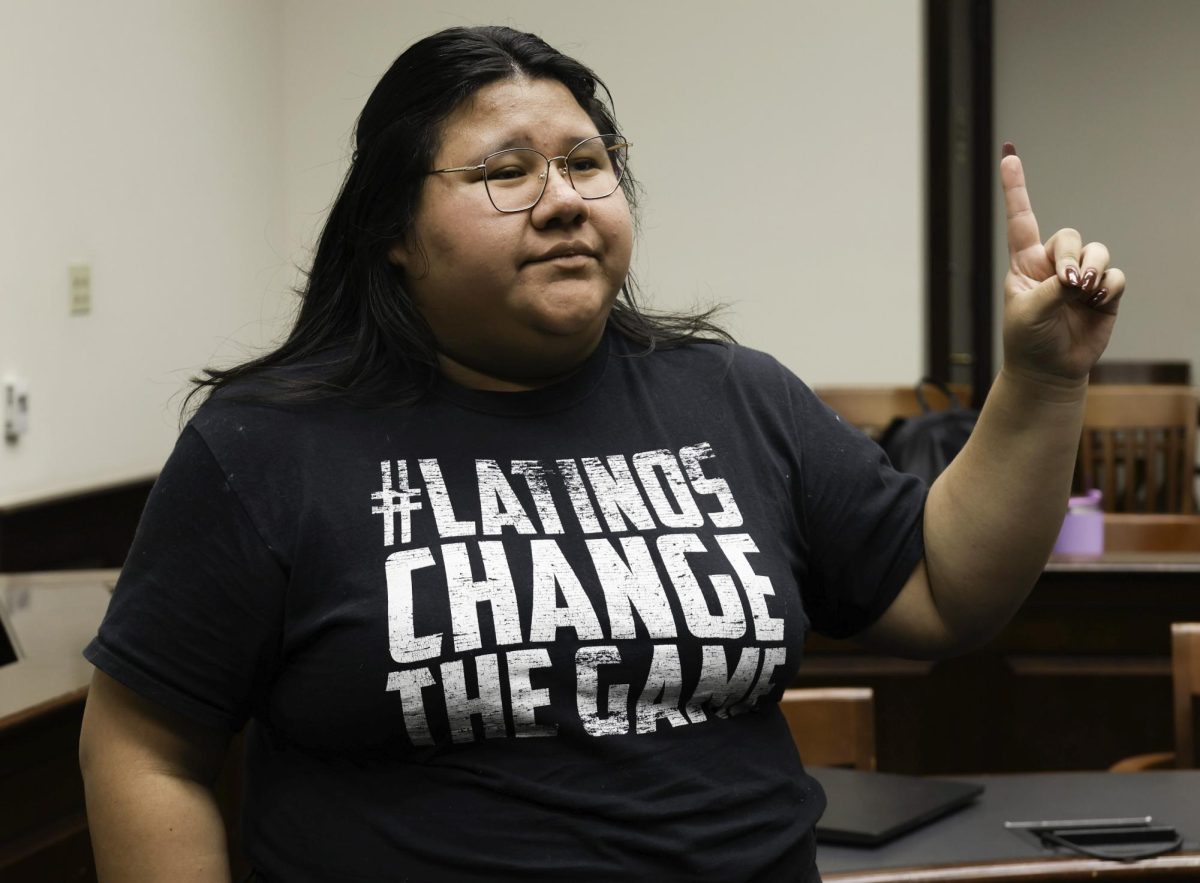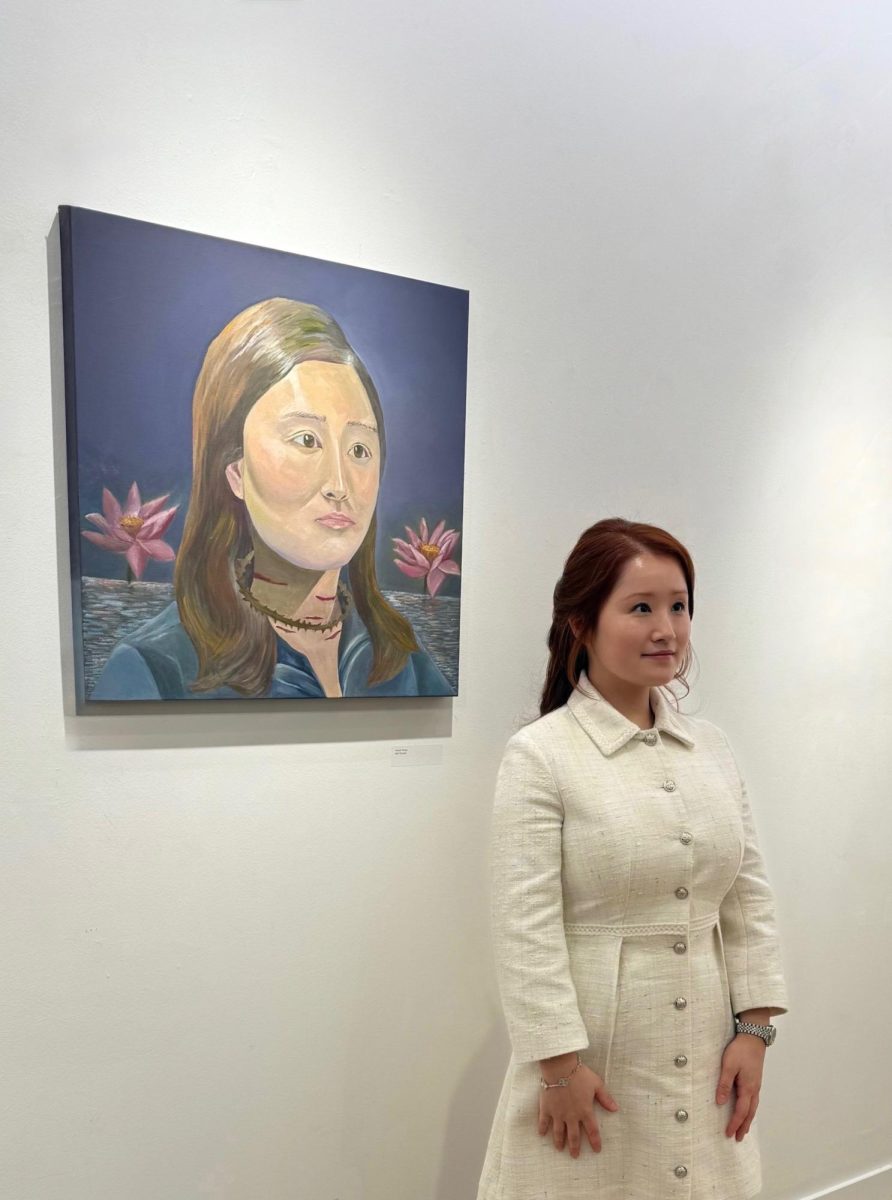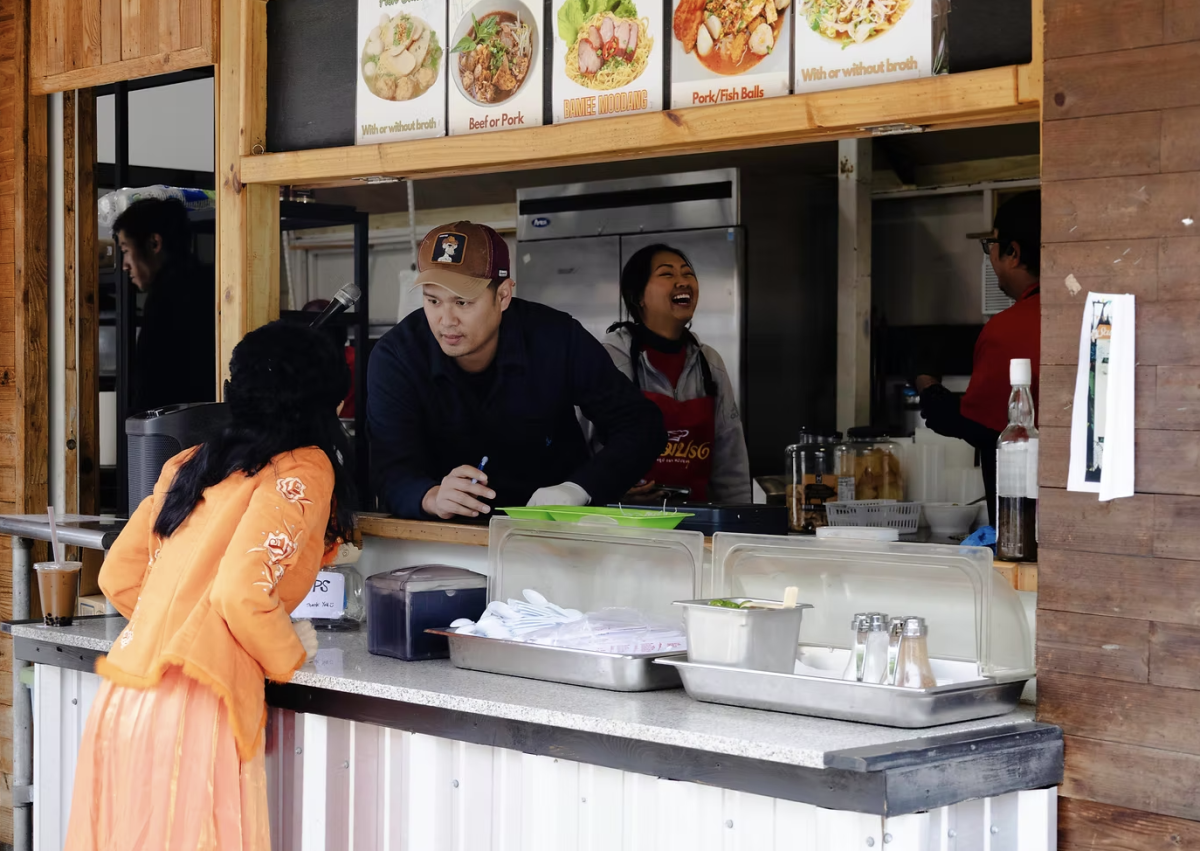Learning fashion history aids the industry
Studying fashion is not just about analyzing clothes, but recognizing the history and components that shape its future: agriculture, art, anthropology, race and gender, according to the opening panel of Fashion/Media Power and Possibility Symposium.
SMU’s fashion media program hosted a two-day research symposium Friday, Feb. 28 and Saturday, March 1. The symposium brought together fashion enthusiasts from across the country.
Friday’s opening session in the Gene and Jerry Jones Atrium of the Owen Arts Center featured panelists José Blanco F., Kimberly Jenkins and Lauren Peters. Moderated by Fashion Media Professor Jenny Davis, the panel discussed how studying fashion history can contribute to the decolonization of the industry.
“We have to recognize that the fashion industry is terrible,” said Blanco, an associate professor in the History of Art Department at the Fashion Institute of Technology in New York.
Eurocentric dominance around the globe perpetuates stereotypes that reinforce Western beauty ideals, prioritize European designers and brands, and marginalize non-Western influences. This dominance often dictates industry standards, favoring slim, white and Eurocentric features in models, which limits representation and diversity.
Blanco, Peters and Jenkins each study fashion history, but cater to their own niches–all which help to reconstruct the system. Blanco’s work explores how dress and popular culture intersect with identity, class and societal shifts, particularly in Latin America and other historically underrepresented regions.
Peters, an associate professor of Fashion Studies and Director of the Fashion Study Collection in the School of Fashion at Columbia College Chicago, examines how clothing, body image and identity interact. Her research also focuses on plus-size fashion and the impact of standardized sizing.
Through the Fashion and Race Database (FRD), an invention by Jenkins, she teaches her students how to critically examine the intersection of the two. Jenkins is also the founder and CEO of Artis Solomon, which offers a consultancy on fashion history and cultural awareness.
Jenkins’ background in fashion studies, cultural anthropology and art history aided her in creating a syllabus for her soon-to-be fashion and race class at Parsons School of Design. This syllabus laid the framework for the FRD, which launched in 2019.
“The fashion race database is structured based on modules that I had developed in the syllabus. So conversations like cultural appropriation, the construct of race, race and hair, race and skin, decolonizing fashion and so on,” Jenkins said.
Also working as an education consultant for Gucci, Jenkins directly contributed to decolonizing fashion by pushing a major luxury brand to confront its racial blind spots. Following the backlash over Gucci’s blackface sweater controversy, designed by Alessandro Michele, Jenkins conducted workshops and lectures to educate executives and designers on the historical context of race in fashion.
It’s hard for society to face their fashion bias’ because the industry clings to consumerism.
“Life that the industry has made in terms of inclusivity and representation over the last several years is that it was only surface level. It was all about the image of inclusivity and taking inclusivity and turning it into a marketing tactic,” Peters said.
The fashion industry’s embrace of the body positivity movement has been largely performative. Once brands saw that the movement as unprofitable and “unsexy,” they backslide on their inclusivity promises. Peters also says that the problems start at the source: the whole model of mass manufacturing was built on the foundation that one can fit into small, medium and large.
“If we do want to see systemic, authentic change in the industry, it requires rethinking our systems,” she said.
The industry also needs to let more voices in.
“You know, we talk a lot about the idea of decolonizing fashion, which, of course, is very important,” Jenkins said. “But I feel that we have emphasized more so on decolonizing the content of fashion.”
Blanco notes that paying attention to the physical representation of the industry is crucial, but says that the only way to make real change is by challenging the type of people we let sit at the table.
By critically examining fashion history, challenging Eurocentric narratives and advocating for systemic change, scholars like Blanco, Jenkins and Peters are paving the way for a more inclusive and equitable fashion landscape.
Finding solutions for fashion inclusivity
During the last weekend in February leading into the first of March, the Fashion Media Department at SMU hosted a research symposium that brought a wide range of fashion experts and their research together. Panels explored evangelical feminism, ageism and sustainability over two days with an audience of SMU students, professors and fashion lovers.
In the chamber of the Hughes-Trigg Student Center, Petra Egri, head of the Department of Applied Arts at the University of Pécs, talked about the issues of ageism within the fashion industry.
Egri issued apologies to the audience that included phrases many women constantly say with problems regarding their looks.
“‘Sorry for my appearance, my words, my figure, my age, my hair, my personality,’” Egri said. “Women have continually apologized for things that don’t deserve any apology.”
Egri’s research focused on the criticism that many older women face over their looks. She brought up actress Sarah Jessica Parker, who spoke about the issue on her social media, answering critiques about her age.
Egri’s research emphasized how women are expected to reach certain milestones in their lives, both in terms of life goals and fashion. Egri offered a few examples such as one shouldn’t wear a mini skirt past their 40s and by their 30s, women should want to start having babies.
“The old-fashioned view is that it is appropriate for a typical woman about a certain age to start doing certain things and stop doing others,” Egri said. “And after you’re 50, you shouldn’t want to be sexy unless you want to be ridiculed.”
Lesley Heller’s research was focused on the career of Carrie Donovan, a fashion journalist whose writing covered the haute couture craze of the mid-20th century and the late 20th century turn to casual fashion.
Heller showcased Donovan’s impact and her advocacy towards a more accessible and affordable fashion industry.
“Donovan championed that the idea of fashion should be accessible, aspirational and practical,” Heller said.
After retiring, Donovan began working as the face of Old Navy. The store invited families into a comfortable shopping environment.Heller’s research showed Donovan’s ability to connect with all those who had an interest in fashion and helped to redefine Old Navy’s image.
In another panel, Doris Domoszlai-Lanter explored the relationship between AI and fashion magazines.
Lanterner talked about how many images are created with AI, but their quality is not as clear as they should be. These images, however, can be readjusted by people. As AI continues to develop, so will the images that it creates and shortly we will see pictures from AI that are just as good and clear as those made by a high-level camera.
In 2023, Levi’s partnered with Lalaland.ai. The collaboration created AI models that aimed to help increase diversity. Lanterner emphasized how this usage of AI is not the most ethical way for the industry of fashion.
“They attempted to provide us with a somewhat diverse group, but we’re looking at ethically ambiguous or even downright unethical use in this system,” Lanterner said.











